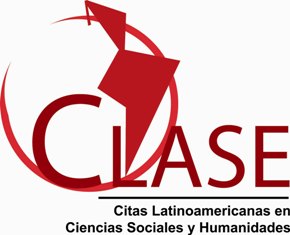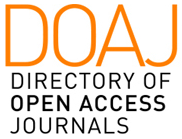From immobilization to exercise as a therapeutic pillar in Rheumatoid Arthritis (Review)
Palabras clave:
Rheumatoid arthritis, physical exercise, non-pharmacological treatment, joint rehabilitation, combination therapy, immobilization, EULAR guidelinesResumen
This article analyzes the historical transformation in the management of rheumatoid arthritis (RA), from the harmful paradigm of immobilization to the consolidation of physical exercise as an essential adjuvant therapy. Its objective is to demonstrate how the synergistic integration of advanced pharmacological treatments and structured physical activity redefines the current standard of care. During the 20th century, absolute rest during inflammatory flares generated severe iatrogenic effects: muscle atrophy, accelerated osteoporosis, and irreversible functional disability. This approach began to reverse at the beginning of the 21st century, when robust studies showed that supervised and adapted exercise was not only safe but essential to counteract the systemic damage of inactivity. In parallel, the pharmacological revolution with biological agents and JAK inhibitors and the "treat to target" (T2T) strategy enabled effective inflammatory control, facilitating the viability of exercise.
Recent research confirms key multisystem benefits: improved muscle strength and functional capacity (HAQ), bone protection against glucocorticoids, reduction of cardiovascular risk the main cause of mortality in RA and management of refractory symptoms such as fatigue and persistent pain. International guidelines (EULAR 2023, ACR 2021) thus endorse exercise as an essential non-pharmacological pillar of therapy. Therapeutic synergy is essential: drugs control underlying inflammation, while exercise restores physical function, prevents comorbidities, and optimizes quality of life. This strategic complementarity represents a paradigm shift in the comprehensive approach to RA, where therapeutic movement far from being an adjunct is an active component that enhances clinical outcomes and empowers patients.
Descargas
Referencias
Abdelhafiz, D. (2023). Biomarkers for the diagnosis and treatment of rheumatoid arthritis–a systematic review. Postgraduate Medicine, 135(3), 214-223. doi:https://doi.org/10.1080/00325481.2022.2052626
Alivernini, S., & Firestein, G. (2022). The pathogenesis of rheumatoid arthriti. Immunity, 55, 2255-2270. doi:https://doi.org/10.1016/j.immuni.2022.11.009
Baillet, A., & Zeboulon, N. (2020). Efficacy of cardiorespiratory aerobic exercise in rheumatoid arthritis: Meta-analysis of randomized controlled trials. Arthritis Care & Research, 72(7), 1003–1014. doi:https://doi.org/10.1002/acr.23925
Demmelmaier, I., & Opava, H. (2020). Exercise and lifestyle changes in rheumatoid arthritis. Nature Reviews Rheumatology, 16(5), 291–292. doi:https://doi.org/10.1038/s41584-020-0406-4
Fraenkel, L., & Bathon, J. (2021). American College of Rheumatology Guideline for the Treatment of Rheumatoid Arthritis. Arthritis & Rheumatology, 73(7), 1108–1123. doi:https://doi.org/10.1002/art.41752
Frisell, T., & Bower, H. (2023). Safety of biological and targeted synthetic disease-modifying antirheumatic drugs for rheumatoid arthritis as used in clinical practice: results from the ARTIS programme. Annals of the rheumatic diseases, 82(5), 601-610. doi:http://dx.doi.org/10.1136/ard-2022-223762
Gualano, B., & Bonfa, E. (2021). Physical activity for paediatric rheumatic diseases: Standing up against old paradigms. Nature Reviews Rheumatology, 2, 70–71. doi:https://doi.org/10.1038/s41584-020-00564-0
Gwinnutt, M., & Wieczorek, M. (2023). Effects of physical exercise and body weight on disease-specific outcomes of people with rheumatic and musculoskeletal diseases (RMDs): Systematic reviews and meta-analyses informing the 2021 EULAR recommendations for lifestyle improvements in people with. RMD Open, 9(1), e002650. doi:https://doi.org/10.1136/rmdopen-2022-002650
Katz, P., & Margaretten, M. (2020). Role of sleep disturbance, depression, obesity, and physical inactivity in fatigue in rheumatoid arthritis. Arthritis Care & Research, 72(6), 838–845. doi:https://doi.org/10.1002/acr.23920
Lalón, L. (2022). Intervenciones de enfermería en adultos con artritis reumatoide. Riobamba. Ecuador. : Riobamba, National University of Chimborazo. http://dspace.unach.edu.ec/handle/51000/9411
Metsios, S., & Moe, H. (2020). Exercise and inflammation. Best Practice & Research Clinical Rheumatology, 34(2), e101504. doi:https://doi.org/10.1016/j.berh.2020.101504
Rausch, k., & Juhl, B. (2020). Effects of exercise and physical activity promotion: meta-analysis informing the 2018 EULAR recommendations for physical activity in people with rheumatoid arthritis, spondyloarthritis and hip/knee osteoarthritis. RMD Open, 6(2), e001289. doi:https://doi.org/10.1136/rmdopen-2020-001289
Sjøgaard, G., & Christensen, R. (2020). Exercise is more than medicine: The working age population's well-being and productivity. Journal of Sport and Health Science, 9(2), 119–123. doi:https://doi.org/10.1016/j.jshs.2019.10.007
Smolen, S., & Landewé, M. (2020). EULAR recommendations for the management of rheumatoid arthritis with synthetic and biological disease-modifying antirheumatic drugs: 2019 update. Annals of the Rheumatic Diseases, 79(6), 685–699. doi:https://doi.org/10.1136/annrheumdis-2019-216655
Teuwen, M., & Weely , S. (2024). Effectiveness of longstanding exercise therapy compared with usual care for people with rheumatoid arthritis and severe functional limitations: a randomised controlled trial. Annals of the Rheumatic Diseases, 83(4), 437-445. doi:https://doi.org/10.1136/ard-2023-224912
Descargas
Publicado
Versiones
- 2025-10-10 (2)
- 2025-07-17 (1)
Número
Sección
Licencia
Derechos de autor 2025 Revista científica Olimpia

Esta obra está bajo una licencia internacional Creative Commons Atribución-NoComercial-CompartirIgual 4.0.

































